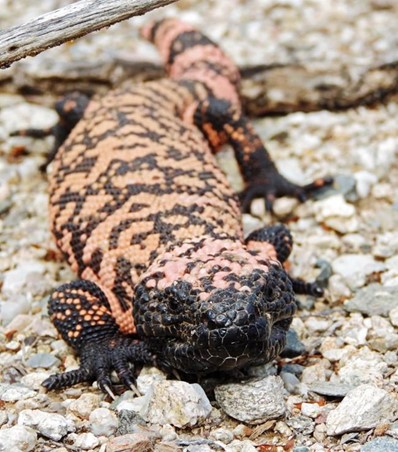Christopher Ward, 34, of Littleton, Colorado, succumbed to the venomous bite of his pet Gila monster on February 12th after the reptile bit him on his hand. His girlfriend discovered that one of Ward’s two pet Gila monsters had “latched onto [his] hand” and promptly called 911. However, Ward's condition deteriorated rapidly, leading to his hospitalization and eventual death on February 16th. Despite their toxic venom, fatalities from Gila monster bites are exceedingly rare, with no reported US cases in the last century.
The two Gila monsters, one of which was purchased at a reptile exhibition and the other obtained from a breeder in Arizona, are illegal to own in Lakewood, Colorado. The animals were confiscated from Ward's residence by authorities, along with 26 spiders kept in terrariums, and are slated to be relocated to an animal park in South Dakota.
The Gila monster (Heloderma suspectum) is the largest lizard species in the United States, typically reaching lengths of up to 22 inches and weighing over a pound. Found primarily in regions encompassing Arizona, Mexico, the southeastern corner of California, the southern tip of Nevada, and the southwestern corners of New Mexico and Utah, the carnivorous Gila monster is active during the day, especially in the early morning or late afternoon, occasionally venturing out shortly after dark, especially in hot weather. They are elusive creatures that spend most of their time underground in burrows or caves, emerging only for short periods to dig, hunt, or bask. Their camouflage makes them difficult to spot, and they prefer to remain hidden, resorting to biting if confronted or threatened.

Gila Monster (Heloderma suspectum) Source: NPS
One of only three species of venomous lizards globally, Gila monsters are generally non-aggressive animals despite their venomous nature. When threatened, they may emit warning signs such as hissing or backing away before resorting to defensive measures. They can deliver a swift, forceful, and considerably painful bite if provoked further. Once they latch onto flesh, they may continue to chew on the wound, delivering venom through grooves in their teeth. Typically, they only release their grip once they perceive the threat has subsided.
It is advisable to avoid a Gila monster bite by simply leaving it undisturbed and ensuring that children and pets are kept at a safe distance. The bite is rarely life-threatening, but symptoms including swelling, intense burning pain, vomiting, dizziness, weakness, tachycardia, and hypotension may manifest. The most life-threatening, but rare, effect of the Gila monster toxin is anaphylaxis. Enzymes found in the lizard’s saliva have been the subject of significant research, including the production synthetic GLP-1 mimics for the treatment of type 2 diabetes.
In the event of a bite, the Arizona Poison and Drug Information recommends the following:
- Stay calm.
- If bitten on the arm or hand, lower the lizard to the ground so that its feet contact the ground. By doing so, the reptile may feel safer and be more inclined to let go.
- Use a firm device (e.g., a rigid stick) to pry the mouth open. Ideally, this should be done while the lizard is securely on the ground to prevent distressing the animal further.
- Keep the injured limb immobilized below the level of the heart.
- Refrain from applying ice or using a constriction bandage or tourniquet.
- Observe for at least 12 hours after a bite
There is currently no antivenom for treating a Gila monster bite. Treatment is usually supportive, encompassing crystalloid fluids and vasopressors for hypotension, analgesia, and tetanus prophylaxis. Antibiotics could be considered based on potential pathogens in its feeding habitat.